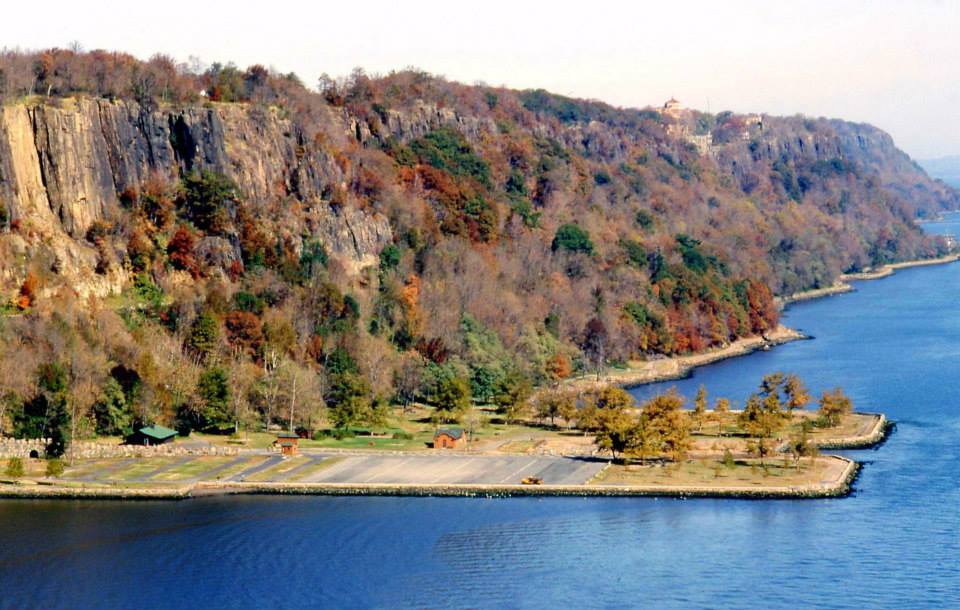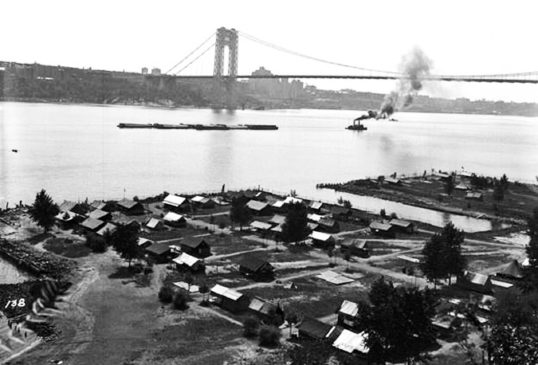
BY KRISTIN BEUSCHER
OF NORTHERN VALLEY PRESS
BERGEN COUNTY, N.J. –– We love the fall foliage in this photograph (above) looking north at the cliffs of the Palisades, captured 50 years ago on Oct. 30, 1967. The area of land in the foreground is Ross Dock in Fort Lee, with Englewood Cliffs beyond. The photo was taken from the George Washington Bridge.
[slideshow_deploy id=’899′]
Ross Dock is just north of the former site of the Carpenter Brothers’ quarry in the late 19th century. This notorious operation was blasting 12,000 cubic yards of rock daily at its peak, according to news articles of the time. It was shut down in 1900 after a period of public outcry in favor of preserving the cliffs.
“Much of the present-day [Ross Dock] picnic area was built on sunken barges and other landfill from the quarry days,” according to a history from the Palisades Interstate Park Commission.
By the 1930s, as shown in the photo below, Ross Dock was used as a camping site for families from New York City. As many as 3,000 campers used the facility annually between late spring and early autumn, staying anywhere from one week to the entire season.

The park’s Annual Report of 1932 noted, “Ross Dock Camp is equipped with many conveniences such as city water, hot and cold showers, sanitary sewerage … a rustic cabin housing the resident camp manager and camp store.”
The location is named for P. Sanford Ross, a Newark investor and socialite from whom the Park Commission bought the land in 1917.
As the Park Commission explains in a 2014 article titled “Camp Colony,” “Ross had bought the property and its riparian rights from William Allison and others in the 1880s, to develop its potential as a stone quarry. The Park Commission removed the old quarry equipment and, in the 1920s, designated it as a ‘camp colony.’ Big canvas tents were set up on wooden platforms, and the Commission rented them out by the week.”
The Port Authority rented the location as a workers’ camp during the construction of the George Washington Bridge.
By the middle of the 1930s, demand for camping spots was on the decline. In an attempt to boost public interest, the Park Commission replaced the tents with 30 three-room cabins. During World War II public use of the camp was put on hiatus, but the spot was intermittently used for U.S. Army encampments.
[slideshow_deploy id=’899′]
Finally, in the mid-1940s, the cabins, too, were torn down, and the location was restored to a picnic area, which remains its use today.
Photos courtesy Facebook, Palisades Interstate Park Commission
